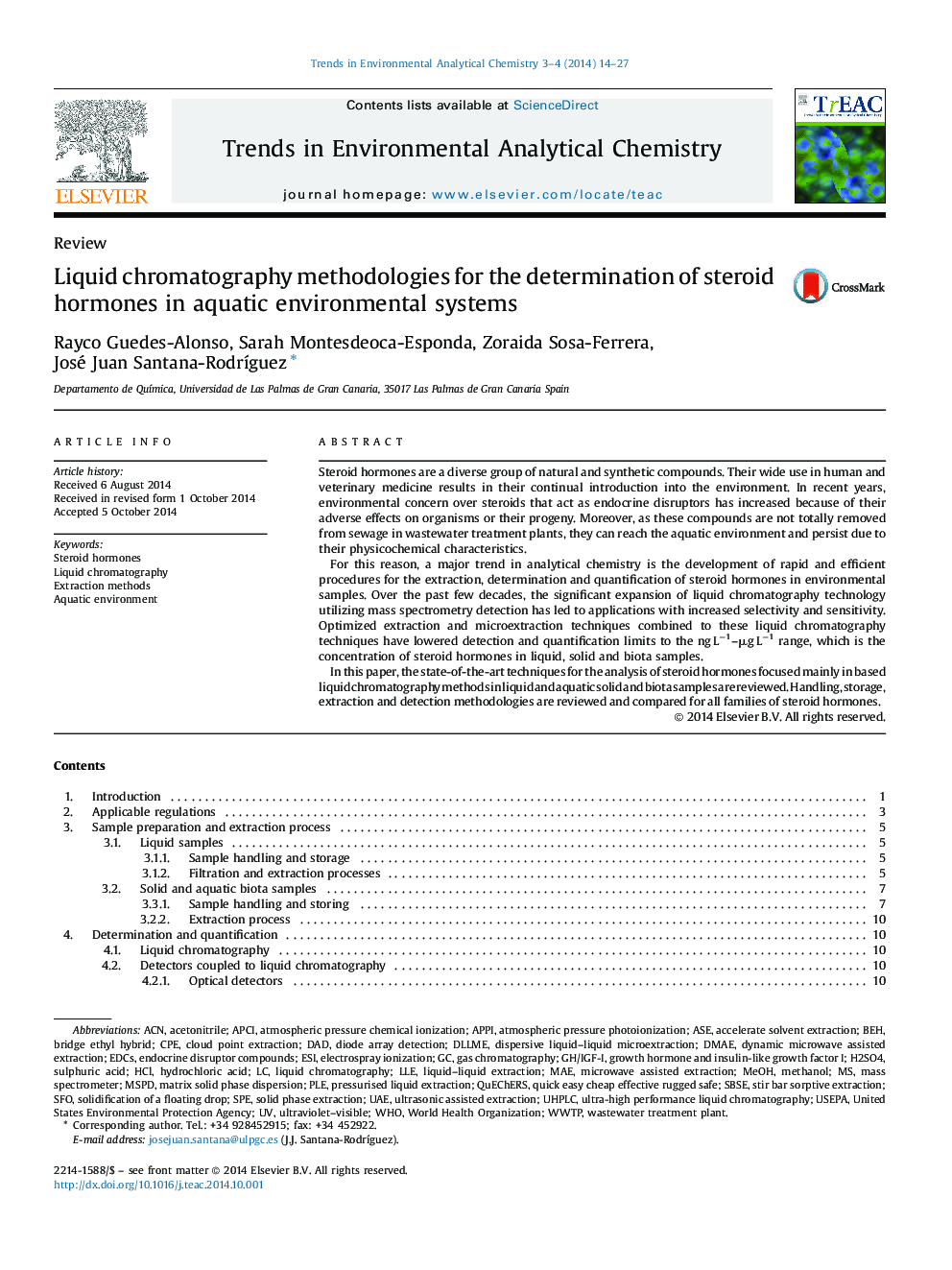| Article ID | Journal | Published Year | Pages | File Type |
|---|---|---|---|---|
| 1251495 | Trends in Environmental Analytical Chemistry | 2014 | 14 Pages |
Steroid hormones are a diverse group of natural and synthetic compounds. Their wide use in human and veterinary medicine results in their continual introduction into the environment. In recent years, environmental concern over steroids that act as endocrine disruptors has increased because of their adverse effects on organisms or their progeny. Moreover, as these compounds are not totally removed from sewage in wastewater treatment plants, they can reach the aquatic environment and persist due to their physicochemical characteristics.For this reason, a major trend in analytical chemistry is the development of rapid and efficient procedures for the extraction, determination and quantification of steroid hormones in environmental samples. Over the past few decades, the significant expansion of liquid chromatography technology utilizing mass spectrometry detection has led to applications with increased selectivity and sensitivity. Optimized extraction and microextraction techniques combined to these liquid chromatography techniques have lowered detection and quantification limits to the ng L−1–μg L−1 range, which is the concentration of steroid hormones in liquid, solid and biota samples.In this paper, the state-of-the-art techniques for the analysis of steroid hormones focused mainly in based liquid chromatography methods in liquid and aquatic solid and biota samples are reviewed. Handling, storage, extraction and detection methodologies are reviewed and compared for all families of steroid hormones.
